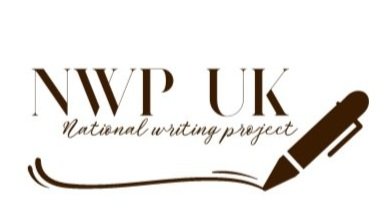Primary teacher Gillian Pearson reflects on her NWP experience and how writing in a group seems to be an island of support in the frenetic waters of a busy working life.
I had wanted to join a NWP group for many years. I had loved the creative writing course that Jeni Smith had run while I attended my PGCE course 17 years previously, but I kept putting off joining up again. I was busy learning my teaching craft, and battling life’s battles, and all that business seemed all consuming for many years. Gradually, I started to see small spaces in my life that could be filled with other stuff- fun stuff-life outside of my work, my worries, my family and friends.
NWP sits very nicely indeed alongside work. The sky didn’t fall in from leaving work early once a month, and joining a lovely little group. I feel a bit sorry for all my friends who haven’t got a Jeni in their lives, as a very special writing mentor. Some people might know lots of people like Jeni - there may be a whole army of these wonderful people out there - but I only know one, and for that I am happy.
The NWP for me is a small gateway into a surprising corner that has special powers, and is almost hidden from everyday life. It is like the school (I love the way many small primary schools are often hidden from the road) and like a book (there is a small perfectly formed world constantly unfolding inside).
Anyway, the group is there. I always go. I never dread going, or feel uneasy about going, or just can’t be bothered going. I go.
The other teachers there are lovely. I really like them. I feel their struggles and I admire that many are juggling so many things. I like listening to them and sharing with them and making and folding mini books with them. We talk a lot about teaching and writing and life and books.
And in between we write.
We write differently: some in small neat careful handwriting; some after much internal thought and some, like me, all in one go. Get it out, that misspelt scruffy scrawl and read it through later. I see my entire class reflected in our styles. How do I help those writers like myself, and those not like me? These are questions I often ponder.
I quite like writing. I always write with the kids. If I expect them to write something, then I need to feel what that feels like too. What kind of language might be needed? How to engage our audience? What techniques can be drawn upon? If I’m writing with them, then we can have a proper dialogue about the work and share what we have got. My writers aren’t always the best in the world, but they write unhindered, and at length, and are usually very happy to share their work.
I think I am re-learning the importance of sharing from the writers group and from Jeni; to help the children find their voice, to make a mark and create and discuss.
I still have much work to do in learning how to inspire my young followers. My work here is not done. My journey is a long loop. I forever re learn what I have forgotten with new twists and shapes and ripples.
Jeni’s leadership of our group holds slippery answers and golden nuggets. Her flickering inspiration is part of many flickering lights that help shape my teaching, twinkling stars which I dart to and from like I’m forming a dot to dot puzzle of how to teach writing. My little followers might sense this frenetic dance from time to time but that is fine: we are on a journey and NWP is a calm island of support along that long and winding road; one that never judges or asks for evidence or has a success criteria.
It just is - and that for me is enough.









